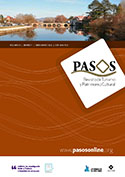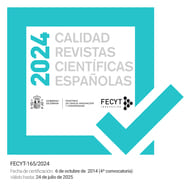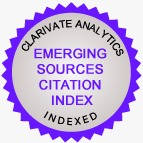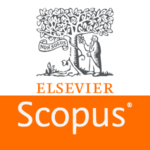Social mapping as a tool for participatory research in the territory. Diagnosis of ancestral landscapes in indigenous communities of the Ecuadorian Amazon
DOI:
https://doi.org/10.25145/j.pasos.2022.20.008Keywords:
social cartography, indigenous communities, landscape, participatory action research, AmazoníaAbstract
The analysis of the landscape and its characterization is usually carried out from quantitative perspectives, that is, its value as established in relation to its physical characteristics and the potential use of its resources. However, misguided diagnoses and the application of ineffective management strategies question these methodologies and reveal the need to generate new epistemologies and qualitative research methods for the subject-place relationship. The objective is to analyze the potential of social cartography as a participatory action research tool (IAP) to represent and characterize ancestral landscapes of the Ecuadorian Amazon. To this effect, the community narratives with respect to place have been used to register elements in their symbolic and cultural values. It is concluded that social cartography is a fundamental strategy of sovereignty and a political instrument to offer a true perspective of the community sense of place from within and without.
Downloads
Publication Facts
Reviewer profiles N/A
Author statements
- Academic society
- PASOS. Revista de Turismo y Patrimonio Cultural
- Publisher
- Instituto Universitario de Investigación Social y Turismo. Universidad de La Laguna (España) - Instituto Universitario da Maia ISMAI (Portugal)
References
Barrera, S. 2009. Reflexiones sobre Sistemas de Información Geográfica Participativos (sigp) ycartografía social. Revista Colombiana de Geografía. Volumen(18), 9-23. Disponible en file:///C:/Users/pccarrion47/Downloads/12798-33711-1-PB.pdf
Balcázar, F. 2003. Investigación acción participativa (iap): Aspectos conceptuales y dificultades de implementación. Fundamentos en Humanidades. Volumen (4),59-77. Disponible en https://www.redalyc.org/pdf/184/18400804.pdf
Becerra, T. 2016. Porque fracaso la Iniciativa Yasuni ITT. Instituto Universitario de Desarrollo y Cooperación IUDC- UCM. Madrid. Disponible en https://www.ucm.es/data/cont/docs/599-2016-02-04T36_Thaia_Becerra.pdf. Consultado 30 de marzo de 2018.
Carrión, P. et al. 2017. Cosmovisión indígena del paisaje: perspectiva sociocultural de preservación medioambiental. Revista Santiago. Volumen (145), 237-249. Disponible en https://go.gale.com/ps/anonymous?id=GALE%7CA536533111&sid=googleScholar&v=2.1&it=r&linkaccess=abs&issn=00489115&p=IFME&sw=w
Colmenares, AM. 2012. Investigación-acción participativa: Una metodología integradora del conocimiento y la acción. Voces y Silencios: Revista Latinoamericana de Educación. Volumen (3), 102-115.
Santos, B.S. 2008. Reinventando la emancipación social. En Pensar el Estado y la sociedad: desafíos actuales. La Paz: CLACSO, Muela del Diablo Editores y Comuna.
De Sousa Santos, B. 1991. Una cartografía simbólica de las representaciones sociales Prolegómenos a una
concepción posmoderna del derecho. Nueva Sociedad. Volumen (116), 18-38. Disponible en http://www.boaventuradesousasantos.pt/media/pdfs/Cartografia_simbolica_NuevaSociedad.PDF
Diez Temantine, J.M., Escudero, B., Carballeda, A., et al. 2012. Investigación e intervención desde las ciencias sociales, métodos y experiencias de aplicación. Versión en línea disponible en: https://webcache.googleusercontent.com/search?q=cache:V7PVlrNLs8gJ:https://www.margen.org/Libro1.pdf+&cd=1&hl=es&ct=clnk&gl=ec . Consultado 28 de julio de 2019.
Fals Borda y Rodríguez Brandao C. (1987) Investigación Participativa. Montevideo: La Banda Orienta
Fals Borda, O. 2008. Orígenes universales y retos actuales de la IAP (Investigación- Acción Participativa.
Peripecias, Versión en línea disponible en
http://www.peripecias.com/mundo/598FalsBordaOrigenesRetosIAP.html. Consultado 14 de agosto de 2019
Foucault, M. 1988. El sujeto y el poder. Revista Mexicana de Sociología. Volumen 50, 3-20.
FIDA. 2009. Buenas prácticas en cartografía participativa. Análisis preparado para el
Fondo Internacional de Desarrollo Agrícola (FIDA). Versión en línea disponible en http://www.ifad.org/pub/map/pm_web_s.pd. . Consultado 27 de noviembre de 2018
Furlong G.1936. Cartografía jesuítica del Río de la Plata (T. I y II). Buenos Aires: Talleres S. A., Casa Jacobo Peuser Ltda.
Guatarri, F. 2000. The Three Ecologies, Trans.I Pindar and P. Sutton. London and New Brunswick: Athlone Press.
Harley, B. 1989. Hacia una deconstruccion del mapa. La nueva naturaleza de los mapas. Cartographica.Volumen 26 (2), 1-20.
Kastrup, V. 2014. Cartografiar é traçar um plano común. Pistas do método da cartografia, 15–41
Kemmis, S. 1988. El currículum: va más allá de la teoría de la reproducción. Madrid: Morata
Lois, C. 2009. Imagen cartográfica e imaginarios geográficos. Los lugares y las formas de los mapas en nuestra cultura visual. SCRIPTA NOVA, Revista Electrónica de Geografía y Ciencias Sociales. Volumen (8), 298. Disponible en htt://www.ub.es/sn/sn-298.htm
Rocha, C.A. 2016. La investigación acción participativa. Una apuesta por la comunicación y la transformación social, Versión en línea disponible en http://www.ingebook.com/ib/NPcd /IB_BooksVis?cod_primaria=1000187&codigo_libro= 4475. Consultado 18 de septiembre 2019
Martínez, M. 2009. Ciencia y arte en la metodología cualitativa. México: Trillas
Montoya, V. 2007. El mapa de lo invisible. silencios y gramática del poder en la cartografía. En Revista Universitas Humanística. Volumen (63), 155-179
Mora, F. 2011. LA Reserva de la Biosfera Yasuni y el turismo sostenible . La construcción del proyecto de la REST desde la interacción sociopolítica de actores. (Tesis de Maestría). FLACSO, Quito.
Sirvent, MT., Rigal, L. 2012. Investigación Acción Participativa: Un desafío en nuestros tiempos para la construcción de una sociedad democrática, Versión en línea disponible en: https://biblio.flacsoandes.edu.ec/catalog/resGet.php?resId=56482. Consultado 28 de julio de 2019
UN-HABITAT. 2010. State of the world's cities 2010-2011: Bridging the urban divide - Overview and key findings. Versión en línea disponible en: https://sustainabledevelopment.un.org/content/documents/11143016_alt.pdf. Consultado 02 de febrero del 2019
Vélez, I. et al. 2012. Cartografía social como metodología participativa y colaborativa de investigación en el territorio afrodescendiente de la cuenca alta del río Cauca. Revista Colombia de Geografía. Volumen (21), 59-73. Disponible en: http://www.scielo.org.co/pdf/rcdg/v21n2/v21n2a05.pdf
Villaverde, X. et al. (2005). Parque Nacional y Reserva de Biosfera. Historia, problemas y perspectivas.
Quito: Abya Yala
Downloads
Published
How to Cite
Issue
Section
License
Copyright (c) 2020 Paulo Carrión, María Yolanda Pérez Albert

This work is licensed under a Creative Commons Attribution-NonCommercial-NoDerivatives 4.0 International License.
I confirm that the work is original (of my/our authorship), and that it will not be submitted to other journals or publications until the final resolution of the review process in PASOS, RTPC.
I authorize the publication of my work by PASOS, PSTN of free and open access in any of the formats that I deem appropriate, for an indefinite period of time and as a non-remunerated collaboration.
Likewise, the author(s) understands that the published work may be linked or deposited on any server or included in other publications (republication), provided that the new place and/or new edition references the original publication and acknowledges the authorship and copyright ownership of PASOS RTPC publications.
Authors understand that a plagiarism-self-plagiarism check will be performed, and the article may be removed at any time from the editorial flow.










